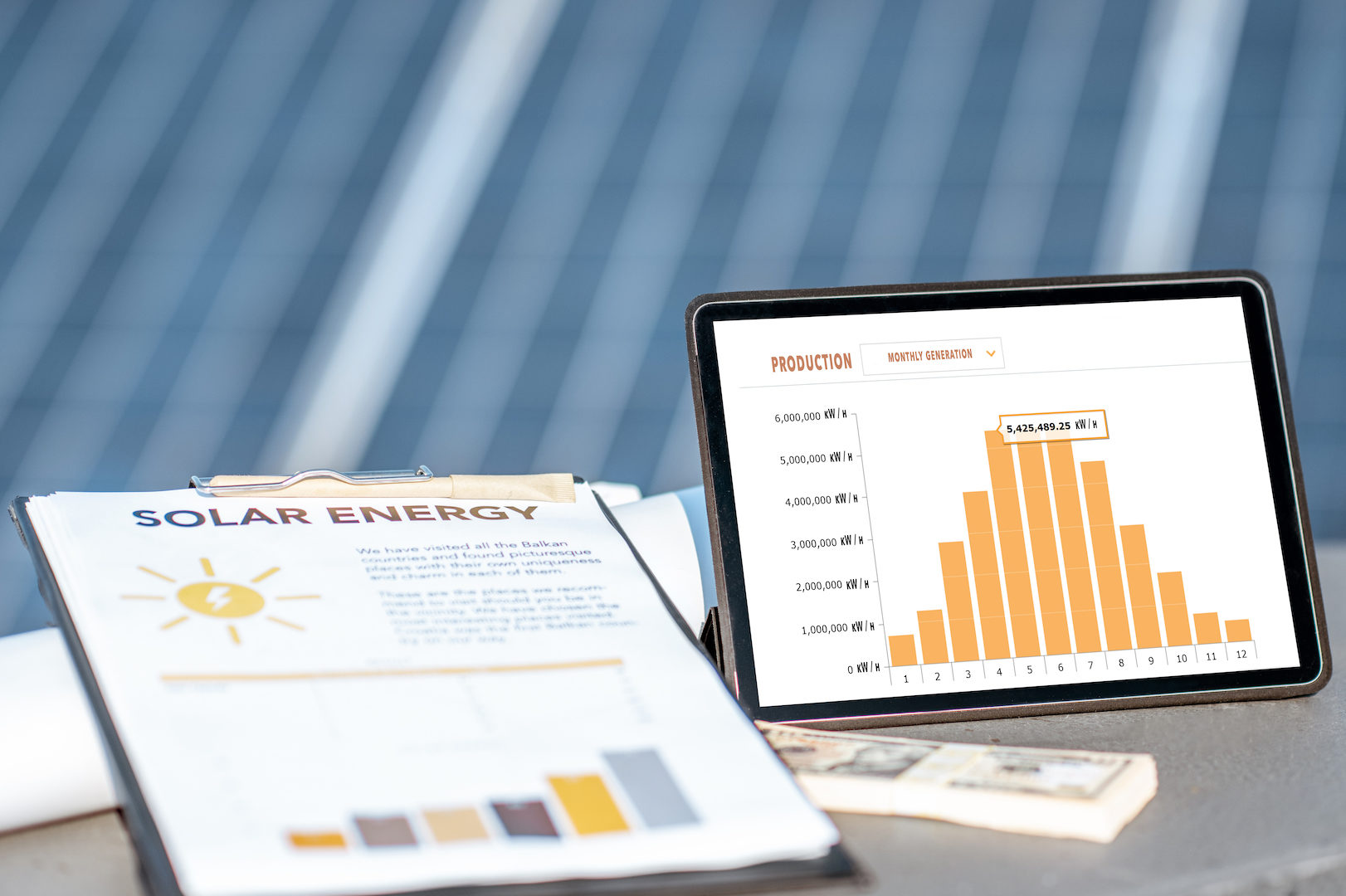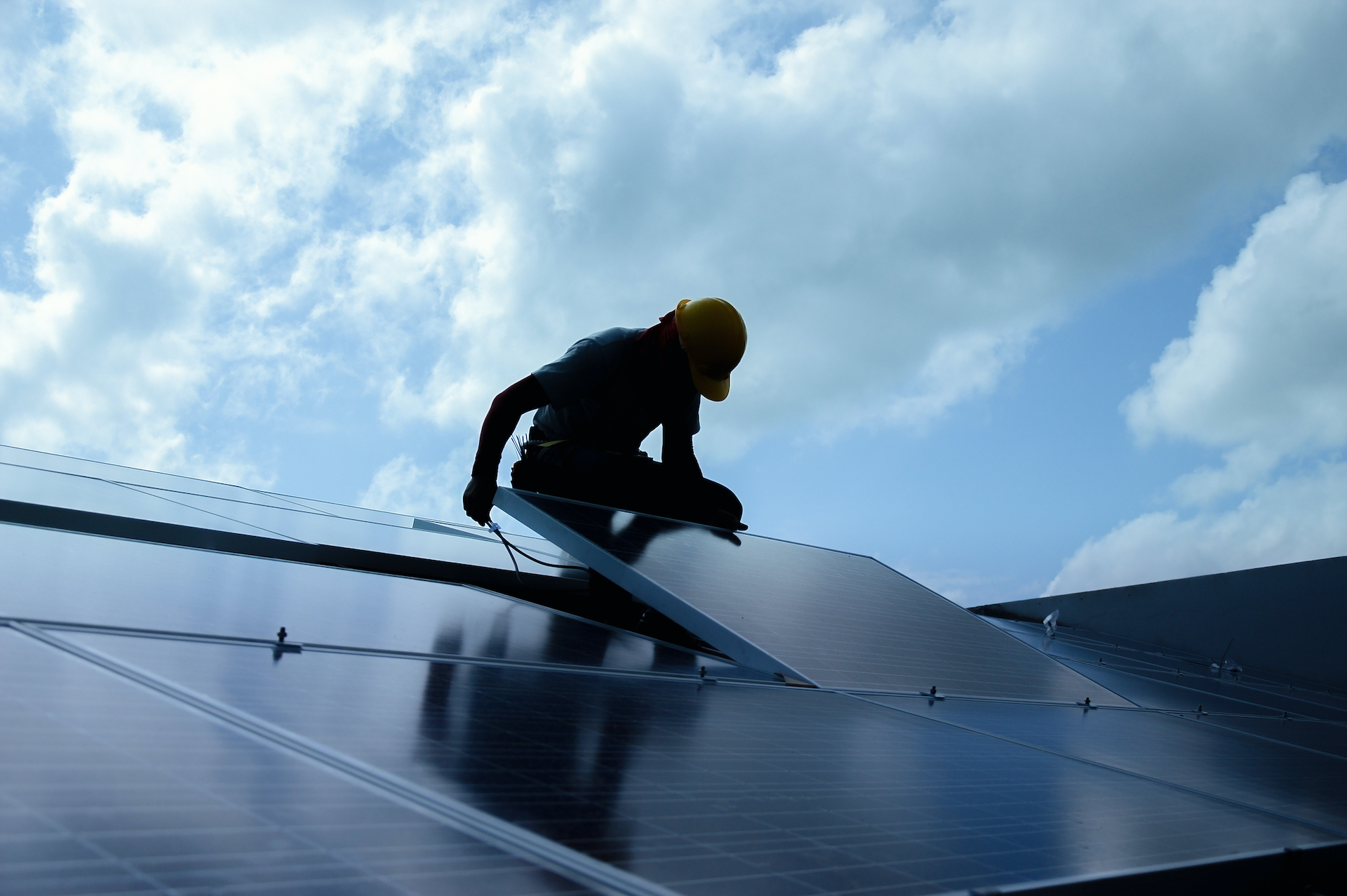Home Solar Checklist
Are you wondering whether your home is ready for solar panels? Here are six questions you’ll need to answer:
1. Do I have the right space?
Solar panels perform best when they’re located in places where they can receive plenty of sunlight. The panels can be installed at ground level if you’ve got space on your property or can be on your roof. For rooftop solar, at typical roof angles, panels will perform best on unshaded roof planes that face south, followed by east or west. The flatter the roof, the more sunlight you’ll get no matter which direction the roof faces.
Standard solar panels produce about 18 watts per square foot. Premium solar panels can produce up to 19 watts per square foot, but as their name suggests, they come at a premium price. Home solar panel systems average about 9,000 watts, so an average system using standard solar panels would require about 500 square feet of total roof space.
2. Will solar panels affect my home’s curb appeal?
If the best roof space for solar panels is on the front of your home or otherwise visible, consider whether you’d be OK with solar panels installed in these locations. Most residential solar panels and mounting systems are all black, reducing the visual impact and making them look more appealing on your roof.
If you’re still stuck on aesthetics, you can consider a solar roof system. Solar roofs can be significantly more expensive than a traditional solar panel system. Are the aesthetics worth the extra cost? Read more about solar shingles, solar tiles, and solar roofing here.

3. Where will the wires from rooftop solar panels go?
If you don’t opt for a solar roof with concealed wiring, wiring from solar panels will need to be protected inside of the conduit. Depending on where your solar panels are on the roof in relation to your electrical panel, the most efficient route for that conduit may be on the exterior of your home. Conduit can be painted to match your siding or other parts of your home to reduce its aesthetic impact. The alternative is to run wiring and conduit inside your home, but that can involve opening up walls adding complexity and cost to your solar project.
4. Is my roof in good condition?
Solar panels come with 25-30 year warranties and can last longer. Having to remove a solar panel system to replace your roof will cost you several thousand dollars in addition to the cost of the new roof. If you anticipate that your roof won’t last another 25 years, consider replacing it before installing solar panels. A new asphalt shingle roof can cost $10,000 – $20,000, while other roof types like tile or metal are more expensive. If you choose to replace your roof and purchase a home solar system at the same time, you may be able to finance both with a single loan. In some cases, the savings generated by your solar panels can actually pay for your new roof!
5. Can my roof structure handle the additional weight?
The good news is that most roof structures are built to handle the extra five pounds per square foot or so that solar panels add to your roof. But it’s best to check if you’re in a high snow area or notice that your roof surface is uneven or otherwise indicates that structural issues may be present. Structural reinforcements can add several hundred or several thousand dollars to your project cost but are typically eligible for the federal solar investment tax credit. Consult your tax professional to determine exactly what you can include.
6. Can my home’s electrical system accommodate solar?
You’ll need at least one unused circuit breaker space in your electrical panel to connect your home solar system. In addition, home solar systems are not allowed to exceed 20 percent of your main electrical panel’s rating. So if you have a 100 amp electrical panel, the circuit breaker for your home solar system can be a maximum of 20 amps, which in turn limits your home solar system to approximately 5,000 watts. For a 200 amp electrical panel, you can double the size of your home solar system to 10,000 watts or 10 kilowatts (kW). A 10kW home solar system is enough to supply all of a typical home’s energy needs.
If you need to upgrade your electrical panel, the bad news is that this could add $2,000 or more to your project cost. The good news is that most newer homes already have 200 amp electrical panels and even if you do need to upgrade, this cost is eligible for the federal solar investment tax credit (again, you’ll need to consult your tax professional).
Home Solar Checklist
Are you wondering whether your home is ready for solar panels? Here are six questions you’ll need to answer:
1. Do I have the right space?
Solar panels perform best when they’re located in places where they can receive plenty of sunlight. The panels can be installed at ground level if you’ve got space on your property or can be on your roof. For rooftop solar, at typical roof angles, panels will perform best on unshaded roof planes that face south, followed by east or west. The flatter the roof, the more sunlight you’ll get no matter which direction the roof faces.
Standard solar panels produce about 18 watts per square foot. Premium solar panels can produce up to 19 watts per square foot, but as their name suggests, they come at a premium price. Home solar panel systems average about 9,000 watts, so an average system using standard solar panels would require about 500 square feet of total roof space.
2. Will solar panels affect my home’s curb appeal?
If the best roof space for solar panels is on the front of your home or otherwise visible, consider whether you’d be OK with solar panels installed in these locations. Most residential solar panels and mounting systems are all black, reducing the visual impact and making them look more appealing on your roof.
If you’re still stuck on aesthetics, you can consider a solar roof system. Solar roofs can be significantly more expensive than a traditional solar panel system. Are the aesthetics worth the extra cost? Read more about solar shingles, solar tiles, and solar roofing here.

3. Where will the wires from rooftop solar panels go?
If you don’t opt for a solar roof with concealed wiring, wiring from solar panels will need to be protected inside of the conduit. Depending on where your solar panels are on the roof in relation to your electrical panel, the most efficient route for that conduit may be on the exterior of your home. Conduit can be painted to match your siding or other parts of your home to reduce its aesthetic impact. The alternative is to run wiring and conduit inside your home, but that can involve opening up walls adding complexity and cost to your solar project.
4. Is my roof in good condition?
Solar panels come with 25-30 year warranties and can last longer. Having to remove a solar panel system to replace your roof will cost you several thousand dollars in addition to the cost of the new roof. If you anticipate that your roof won’t last another 25 years, consider replacing it before installing solar panels. A new asphalt shingle roof can cost $10,000 – $20,000, while other roof types like tile or metal are more expensive. If you choose to replace your roof and purchase a home solar system at the same time, you may be able to finance both with a single loan. In some cases, the savings generated by your solar panels can actually pay for your new roof!
5. Can my roof structure handle the additional weight?
The good news is that most roof structures are built to handle the extra five pounds per square foot or so that solar panels add to your roof. But it’s best to check if you’re in a high snow area or notice that your roof surface is uneven or otherwise indicates that structural issues may be present. Structural reinforcements can add several hundred or several thousand dollars to your project cost but are typically eligible for the federal solar investment tax credit. Consult your tax professional to determine exactly what you can include.
6. Can my home’s electrical system accommodate solar?
You’ll need at least one unused circuit breaker space in your electrical panel to connect your home solar system. In addition, home solar systems are not allowed to exceed 20 percent of your main electrical panel’s rating. So if you have a 100 amp electrical panel, the circuit breaker for your home solar system can be a maximum of 20 amps, which in turn limits your home solar system to approximately 5,000 watts. For a 200 amp electrical panel, you can double the size of your home solar system to 10,000 watts or 10 kilowatts (kW). A 10kW home solar system is enough to supply all of a typical home’s energy needs.
If you need to upgrade your electrical panel, the bad news is that this could add $2,000 or more to your project cost. The good news is that most newer homes already have 200 amp electrical panels and even if you do need to upgrade, this cost is eligible for the federal solar investment tax credit (again, you’ll need to consult your tax professional).
Not sure if your home is a good candidate for solar panels? Let a Sentinel expert evaluate your home and property with a free Solar Assessment.
Not sure if your home is a good candidate for solar panels? Let a Sentinel expert evaluate your home and property with a free Solar Assessment.
Have questions? Send us a message and we’ll answer ASAP.
Have questions? Send us a message and we’ll answer ASAP.
Learn about solar
Find honest answers to some of the most commonly asked questions on home solar and clean energy.
















